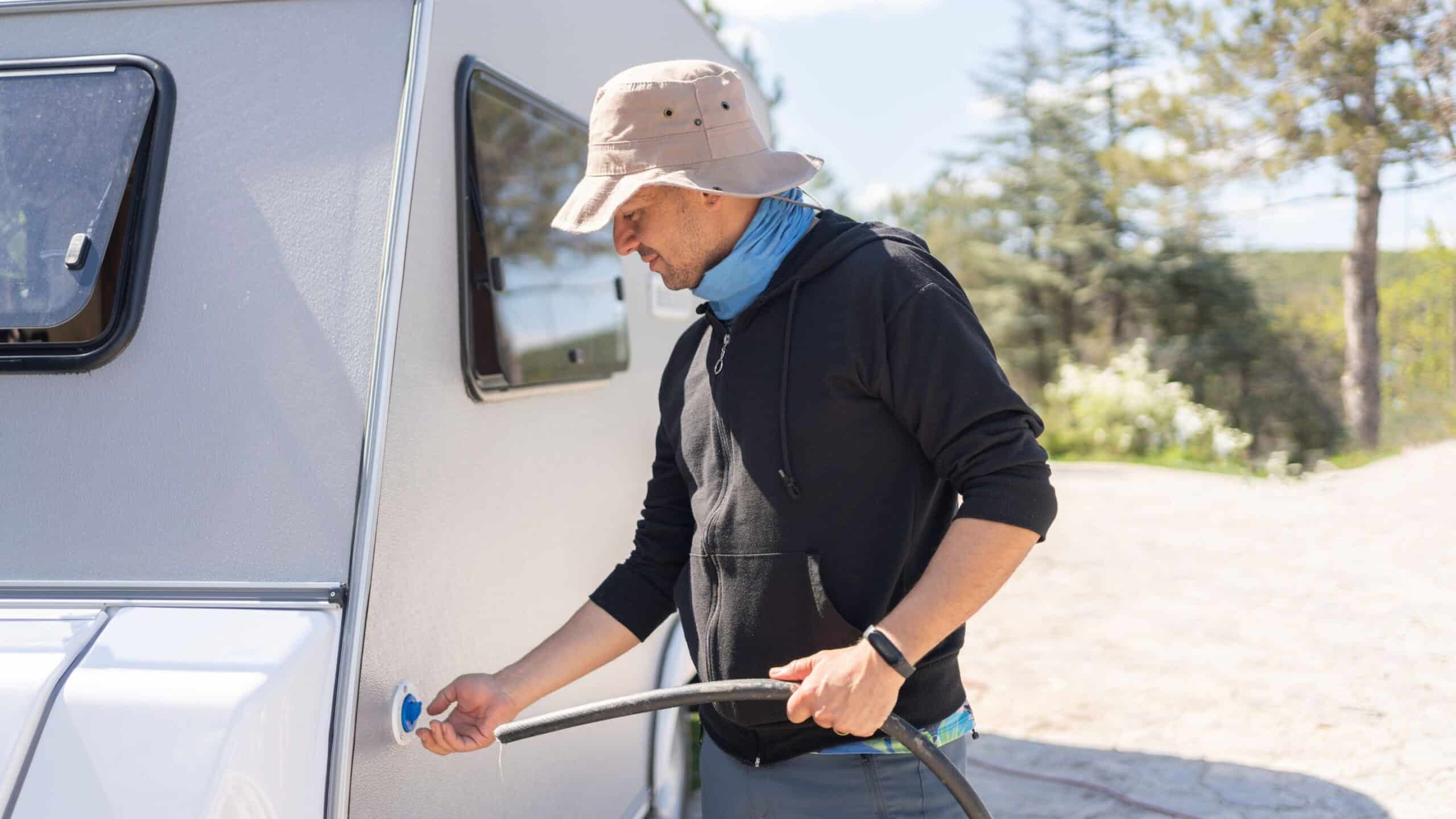Where to Fill Caravan Water Tanks – A Comprehensive Guide
Going on a caravan adventure is an exciting journey, but ensuring you have a reliable water source is important for a comfortable and safe experience. In this comprehensive guide, we’ll explore the key considerations, top sources, and essential tools for filling caravan water tanks, as well as where to fill caravan water tanks and how to adapt to water restrictions and drought conditions. Let’s dive in and learn how to keep your water tanks full and your travels worry-free!
Short Summary
- Filling caravan water tanks requires careful consideration of water quality, safety precautions and conservation.
- Top sources for filling caravan water tanks include caravan parks, service stations, visitor information centres and designated filling stations.
- Research ahead to understand local regulations and be mindful of the environment when travelling in areas with drought conditions.
Filling Caravan Water Tanks: Key Considerations
Filling caravan water tanks is an essential part of any trip, as water is required for various activities, from handwashing to cooking. Running out of water when there is no nearby source can disrupt your journey and even pose health risks. To ensure a smooth and enjoyable experience, it’s important to consider three key aspects when filling caravan water tanks: water quality, safety precautions, and water conservation.
Having the necessary tools and accessories can make filling water tanks easier and safer. We recommended items like a 12v water pump for transferring water from containers to fresh water tanks, water jerry cans, Tap Keys, drinking water hoses, and inline water filters.
With these items in hand, let’s explore each key consideration in more detail.
Water Quality
Water quality is paramount when filling caravan water tanks, as it can directly impact the health of those consuming it. Suitable water sources for filling caravan water tanks include caravan parks, service stations, visitor information centres, designated water filling stations, and bore water and rainwater tanks. I would recommend the last two unless you are desperate.
When obtaining water from a source, it is essential to verify that the potable water tap has been recently used, assess the water quality through a taste test, and observe any signals that may indicate that the water is not suitable for drinking. Determining if water is safe for consumption can be as simple as verifying whether it is classified as potable or non-potable.
However, when in doubt, it’s always a good idea to use an inline water filter to ensure you’re filling your water tanks with clean, safe water.
Safety Precautions
When filling caravan water tanks, it’s essential to observe safety precautions to avoid potential issues. One important step is obtaining permission before filling up caravan water tanks at petrol stations. Certain dump points offer separate drinking water taps, so using the appropriate tap for filling water tanks is crucial.
The staff at petrol stations may be reluctant if caravan water tanks are filled up over an extended period, so it’s best to be considerate of their concerns. Also, if taking water from a nearby creek, a 12 volt water pump is useful, ensuring you can access water safely and efficiently.
Water Conservation
Water conservation is essential when filling caravan water tanks to minimize water usage and guarantee an adequate supply for future use. It can help to cut down on water bills and diminish the need for costly water treatment plants. A motorhome typically has a water tank that can maintain usage for three to four days without being connected to a mains water supply. After this period, the tank has to be refilled.
It is advisable to avoid taking water from local waterways in drought-affected areas where resources are scarce, as it may be essential for sustaining the local ecosystem. Being mindful of your own water- consumption and practising water-saving habits can help maintain water availability for your caravan and the surrounding communities.
Top Sources for Filling Caravan Water Tanks
Caravan parks, service stations, visitor information centres, and designated water filling stations are the top sources for filling caravan water tanks. Ensuring that you fill your water tanks before heading to areas with limited water access can provide peace of mind and prevent any disruptions during your journey.
The cost of filling water tanks at water filling stations is typically around $2-3 for 100 litres. Utilizing Council RV Parks and Free Camps can motivate travellers to invest in fuel, groceries, vehicle repairs, and local tours.
Let’s take a closer look at each of these top sources for filling caravan water tanks.
Caravan Parks
Caravan parks are an excellent resource for filling a caravan water tank. They usually provide access to potable water taps, making it easy to fill your water tanks at a caravan park. It’s not necessary to remain at a camp to fill the water tanks of your caravan.
Caravan water tanks can also be filled at Free and Low-Cost Camps, providing another viable option for travellers. Caravan parks are equipped with access to drinking water, ensuring a reliable and safe water source for your journey.
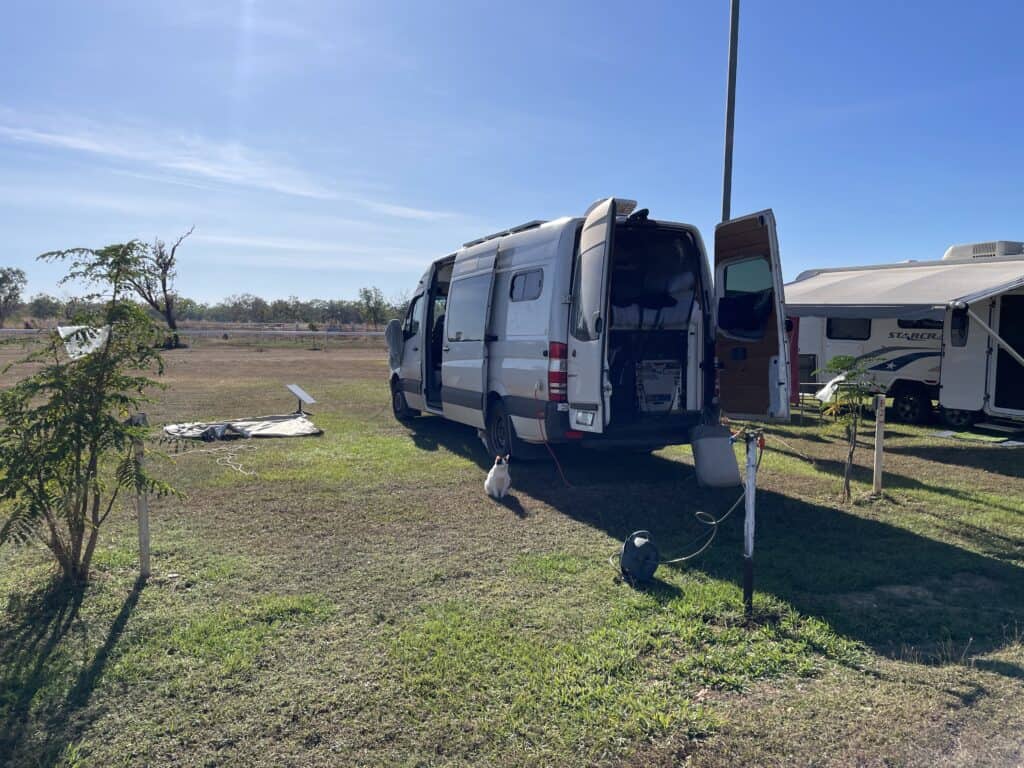
Service Stations
Filling caravan water tanks at service stations is occasionally available. It’s important to consult with the service station attendant before connecting the water hose and refilling the tanks. In some cases, complimentary water may be available, such as at fuel stations in Uluru.
Remember that petrol station staff may be reluctant if caravan water tanks are filled up for an extended period. Being considerate and respectful of their concerns is essential.
Visitor Information Centres
Visitor Information Centres are a great resource for locating drinking water taps for refilling caravan and camper water tanks. When arriving in a new town, Information Centres can assist with locating drinking water, ensuring you have access to a safe and reliable water source.
However, it’s important to observe safety measures when utilizing dump points at Visitor Information Centres. Refrain from filling up water tanks from the tap at the dump point, as this could lead to contamination.
Designated Water Filling Stations
Water fill-up points are being established in Australia more and more. This means that access to clean water is becoming accessible to everyone. Coin-operated water stations allow travellers to fill their tanks with water for a fee, typically ranging from 20 cents per 40 litres to $4 per 100 litres and up to $1 per 1000 litres.
For example, the Exmouth water filling station has a minimum fee of $2.50 and charges $50 per kiloliter (5 cents per litre). Designated water filling stations are a convenient and accessible option for filling caravan water tanks during your travels.
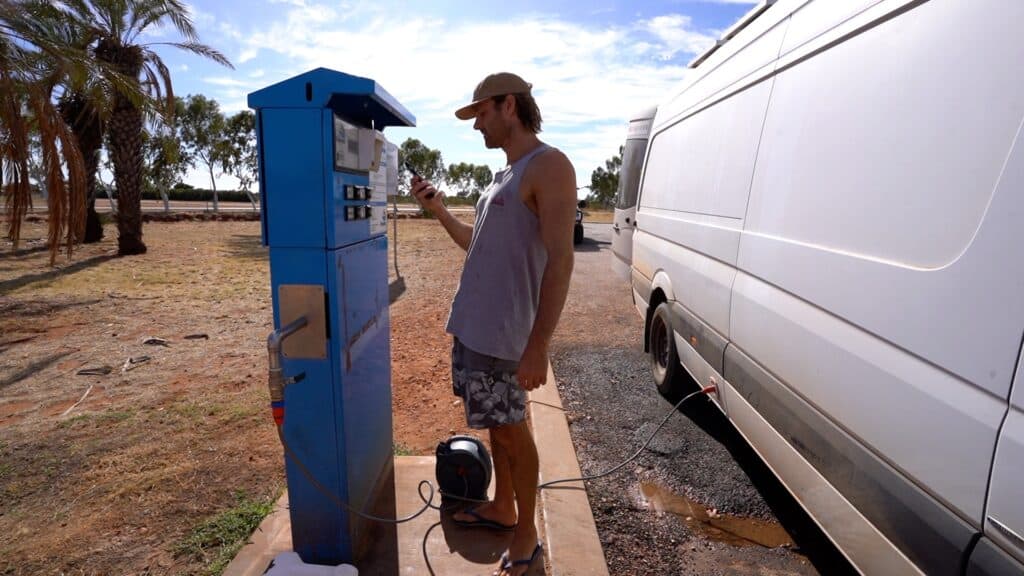
Utilizing Technology to Find Water Sources
Technology such as the WikiCamps app and Google Maps can help you find water sources while travelling, ensuring you have access to fresh running water for your caravan water tanks. These tools can be especially helpful in remote locations where water sources might not be easily accessible.
The WikiCamps app, available for purchase on Google Play or the App Store for $7.99, provides information on the location of drinking water taps, camps, points of interest, dump points, and more.
Google Maps can pinpoint the position of water sources such as caravan parks, service stations, visitor information centres, and designated water filling stations.
WikiCamps App
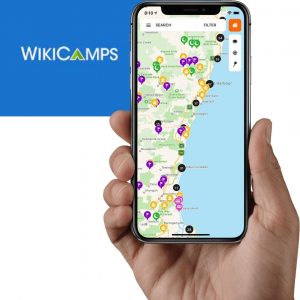
The WikiCamps app is the most reliable guide for finding caravan water tank fill-up locations. Users can set up filters within the app to pinpoint specific amenities, such as drinking water taps, making it easy to find suitable water sources during their travels.
In addition to locating water sources, WikiCamps can be utilized to discover all camping and road-tripping resources, including camps, points of interest, and dump points. The app can also help you determine if a dump point has a separate drinking water tap, ensuring you have access to clean, safe water.
Google Maps
Google Maps is a web mapping service that provides satellite imagery, street maps, real-time traffic conditions, and route planning capabilities. By identifying the position of water sources such as caravan parks, service stations, visitor information centres, and designated water filling stations, Google Maps can help you plan your route accordingly.
In addition to finding water sources, Google Maps can be used to evaluate real-time traffic conditions, allowing you to devise your routes with optimal efficiency. With technology like Google Maps and the WikiCamps app, you can confidently navigate your caravan journey and ensure you have access to the water sources you need.
Tools and Accessories for Filling Water Tanks
Having the right tools and accessories can make filling water tanks easier and safer. Some recommended items include tap keys, drinking water hoses, and inline water filters. These tools can help ensure clean, safe water while filling your caravan water tanks.
In addition, a Stand At Easy Water Tank Filler can eliminate the need to deal with various fittings on the caravan water tank inlet holes and provide the ability not to have to remain there holding the hose in the precise position the entire time, ensuring a filled water tank.
A 4 Way Tap Handle, typically stored in the glovebox of the vehicle, provides access to water when needed.
Tap Key
A tap key is a tool used to turn the water supply at a tap, commonly necessary to fill up caravan water tanks. A tap key may be necessary to gain access to water at an Information Centre or to activate the water at a local park if the handle is missing.
Insert the key into the tap and turn it clockwise until the water is started.
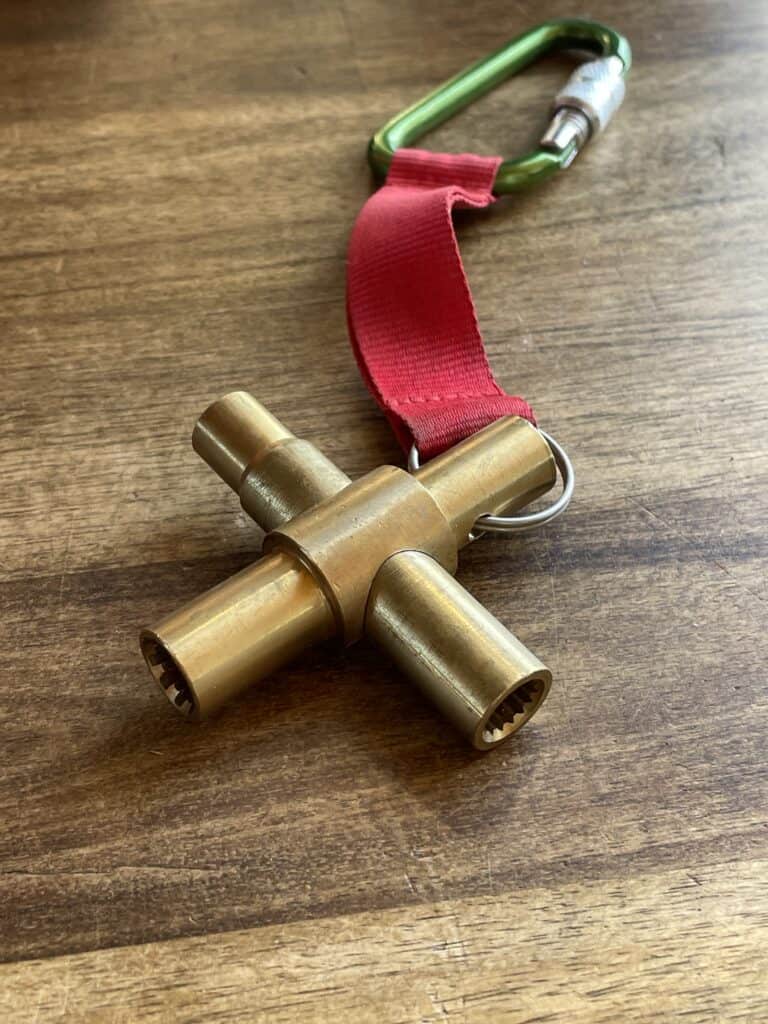
Drinking Water Hose
When filling your caravan water tanks, using a drinking water hose specifically designed for safe water consumption is essential. A blue or white hose is recommended, as these are constructed from materials approved for drinking water and distinct from a regular garden hose.
Inline Water Filter
An inline water filter is a type of filtration system installed directly into a water line to purify the water as it passes through. Using an inline water filter when filling caravan water tanks can help to enhance the quality of the water and restrict any detrimental substances from entering the tanks.
To use an inline water filter, simply install it directly into the water line, ensuring that the water is filtered as it passes through.
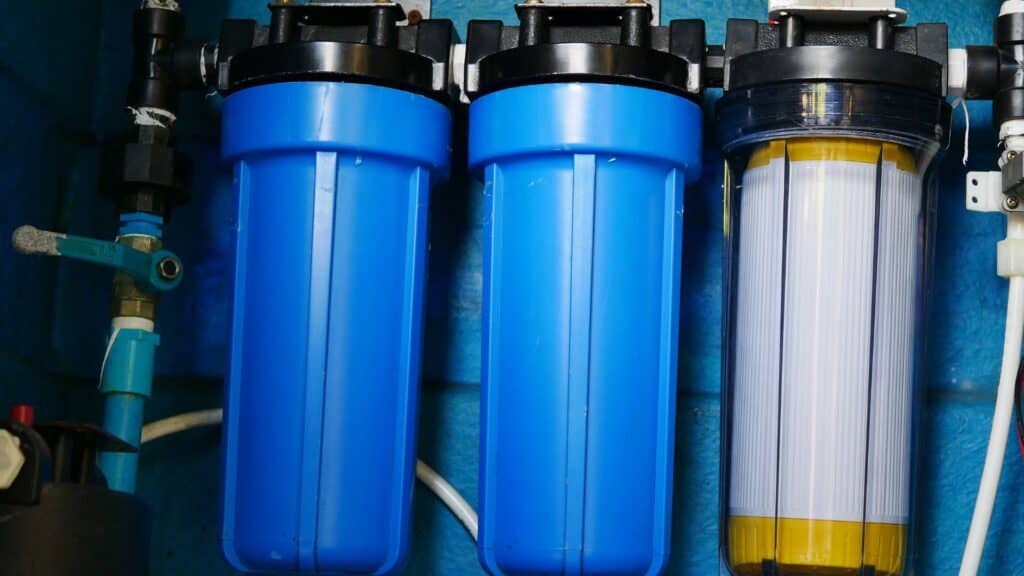
Adapting to Water Restrictions and Drought Conditions
Adapting to water restrictions and drought conditions requires research ahead of time and being mindful of local communities when accessing alternative water sources. Travellers should fill their water tanks before arriving in areas with heavy water restrictions to avoid depleting scarce local resources.
Having spare hoses and tap fittings is also important, as many taps do not come with a connection and are often prone to theft. By being proactive and prepared, you can adapt to water restrictions and drought conditions, ensuring a smooth and enjoyable caravan journey.
Research Ahead
It’s important to research the specific regulations and circumstances of the area you plan to visit. This can be done through online articles or studies, as well as resources available at local libraries.
In addition to researching water restrictions, locating suitable water sources for filling caravan water tanks is essential. The WikiCamps app and Google Maps can be utilized to identify water sources such as caravan parks, service stations, visitor information centres, and designated water filling stations.
Be Mindful of Local Communities
Being mindful of local communities when travelling in areas with water restrictions is crucial. Implementing water-saving habits, such as turning off the tap while brushing teeth or washing dishes, using a bucket to collect water for watering plants or washing cars, and installing a low-flow showerhead, can help maintain water availability for both your caravan and the surrounding communities.
Avoid removing water from local waterways in drought-affected areas where resources are scarce, as it may be essential for sustaining the local ecosystem. By being considerate of local communities and practising water conservation, you can help ensure a sustainable water supply for all.
Alternative Water Sources
Alternative water sources for water restrictions and drought conditions include rainwater harvesting, greywater reuse, recycled wastewater, groundwater, stormwater, and desalination. Rainwater harvesting is the collection and storage of rainwater for reuse, while greywater reuse entails the collection and utilization of wastewater from sinks, showers, and other sources for non-consumptive purposes, such as irrigation and toilet flushing.
Summary
In conclusion, understanding how to fill caravan water tanks, source reliable water supply, and adapt to water restrictions and drought conditions is essential for a comfortable and safe caravan journey. By considering water quality, safety precautions, and water conservation, using the right tools and accessories, researching ahead, and being mindful of local communities, you can confidently embark on your caravan adventure and enjoy worry-free travels. Let the journey begin, and may your water tanks always be full!
